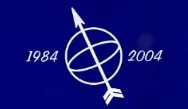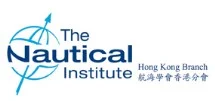May89
archive > Log > Log1989
Hong Kong

Certification under the new HK register

WE ARE VERY FORTUNATE to have the former UK Chief Examiner, Captain Tony Jestico, FNI, as a member of our Branch and he kindly consented to give a talk on the proposed new arrangements for certification and licensing under the new HK register.
As the new HK register will commence well before 1997 and continue afterwards, new certification and licensing systems will need to be in place before the new register is opened. These are based on the following principles: (1) no restrictions on nationality for any rank; (2) standards must be maintained at the present level; and (3) every seafarer must be properly certified for the position to be held.
As there will not be sufficient officers in HK for all HK ships, seafarers from other countries may be eligible for the issue of licences if they hold qualifications issued by other administrations which are regarded as of equivalent standard. They must: (1) hold valid STCW certificates obtained by examination; (2) have sufficient command of English; and (3) have training and experience qualifications broadly equivalent to those required for a HK certificate.
A validation panel will be established to consider the standard of any country's certificates which the Marine Department has been asked to accept. The validation panel will give advice in one of five categories. A non-HK certificate may be considered: (1) equivalent; (2) partially equivalent, but to gain a licence candidate must either undertake a conversion course, an oral examination, or minimum sea service in the rank of certificate (five years service as master or mate or more than two-and-a-half years as a watchkeeper as appropriate); (3) equivalent to a HK certificate of lower grade; (4) not acceptable; or (5) to require further evaluation.
In parallel with the licensing arrangements the certificate structure and examination syllabuses have been reviewed and updated. Unnecessary material has been weeded out of the syllabuses, which have been revised to conform with a two-stage training and examination arrangement linked to a three-tier certification structure. The lowest certificate, at Class 3/ Watchkeeper level, equates to and is based on the existing Class 4 examination, while the intermediate certificate at Class 2/Chief Mate level is an amalgam of the existing Class 1 and Class 2 examinations. The Class 1 /Master Mariner certificate remains at its existing level.
An interesting feature is that the Class 1 certificate can be obtained direct from Class 3 on completion of three years' watchkeeping service, or via Class 2, which requires completion of 18 months' watchkeeping service. In the latter case, candidates must pass an oral examination at Class 1 standard upon completion of the requisite watchkeeping service for that certificate. Both the Class 3 and Class 2/1 written examinations may be taken in two separate parts but these, together with the oral examination and other qualifications, must be completed within a period of two years.
Another interesting feature is that large amounts of the existing oral examination syllabuses which do not require instant recall knowledge have been moved to a written paper at each level. This reduces the time taken up by oral examinations to that required for essential knowledge in respect of collision avoidance, buoyage, manoeuvring and procedures in emergency situations.
It is hoped that the new format will appeal to candidates and encourage them to come forward to obtain Hong Kong certificates of competency.
Contributed by P. R. Owen, MNI
Seaways May 1989

